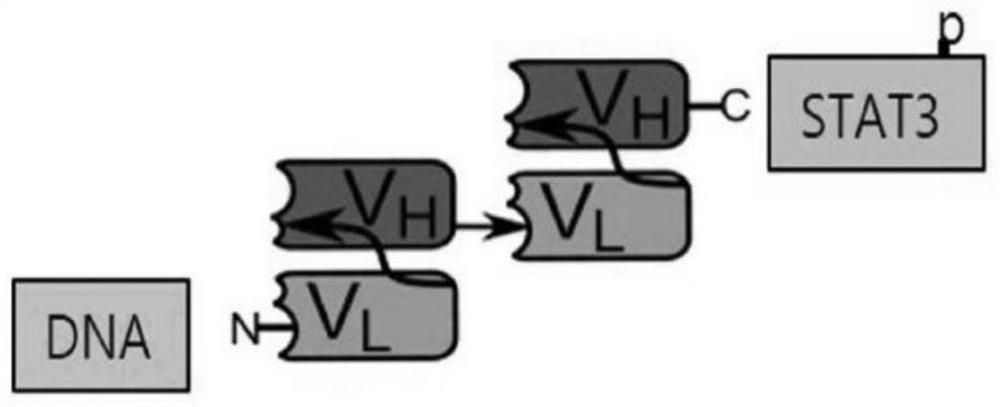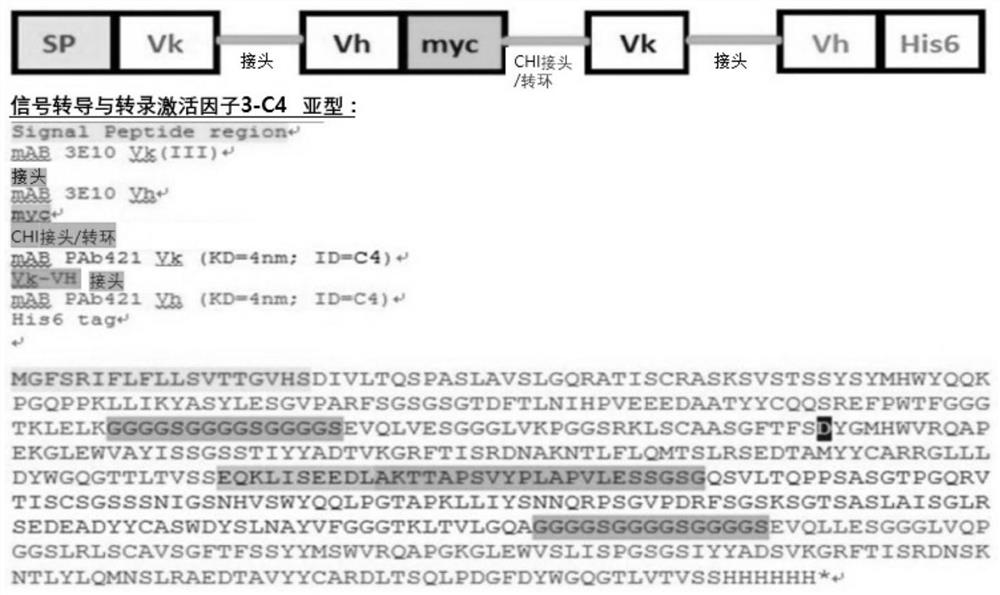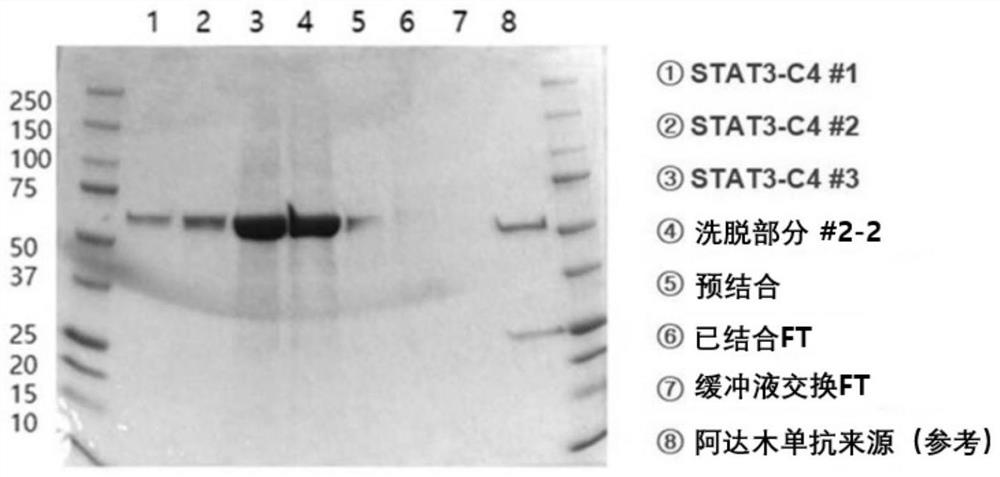Anti-stat3 bispecific antibody having cell-penetrating ability, and pharmaceutical composition containing same
A technology of transcription activator and bispecific antibody, applied in the field of anti-signal transduction and transcription activator 3 bispecific antibody with intracellular penetration ability and pharmaceutical composition containing it
- Summary
- Abstract
- Description
- Claims
- Application Information
AI Technical Summary
Problems solved by technology
Method used
Image
Examples
Embodiment 1
[0120] Example 1. Discovery of Phosphorylated STAT3 Peptide-Specific Antibody Sequences and Screening of Candidates Using Phage Display (Phagy Display)
[0121] In order to prepare an antibody that specifically binds to phosphorylated STAT3 phosphorylated at the 705th tyrosine residue (pY705STAT3), the present inventors first tried to screen antibodies that bind to the phosphorylated STAT3 by using phage display (Phagy Display).
[0122] To this end, first, a human scFv library provided by the Candidate Antibody Discovery Support Team of the Osong Advanced Comprehensive Drug Development Support Center was used, and pY705 STAT3 peptide was used as an antigen for phage display. Specifically, the antibody-phage library is mixed with antigens immobilized on a solid surface to induce antibody-antigen binding (Binding), and unbound phages are removed (Washing). Then, after using alkaline / acidic pH solution or competitor peptide to elute the phage bound to the antigen, infect Escheri...
Embodiment 2
[0126] Example 2. Preparation of Phosphorylated STAT3-specific Recombinant Antibody
[0127] The present inventors prepared recombinant diabodies specific to phosphorylated STAT3 (pY705 STAT3) using the three antibody candidate sequences finally screened in Example 1 above.
[0128] Such as Figure 1a As shown, the diabody prepared in the present invention has the following structure. The antigen-binding site at one end binds to phosphorylated STAT3, and on the other hand, the antigen-binding site at the other end binds to DNA in the nucleus. More specifically, as Figure 1b As shown, the diabody prepared in the present invention is a scFv (STAT3 scFv) that binds to phosphorylated STAT3 and a scFv (3E10 scFv) that penetrates the cell and binds to DNA in the nucleus through a linker in the form of a swivel (linker) Linked structures. The above-mentioned 3E10 scFv uses the DNA-binding domain of an autoantibody found in lupus patients, and further uses the first part of the 'he...
Embodiment 3
[0131] Example 3. Verification of the cell penetration ability of the pSTAT3 antibody
[0132] In order to verify whether the pSTAT3 antibody of the present invention actually has the function of penetrating cells, cell penetrating ability analysis was carried out. To this end, pSTAT3 diabody containing 3E10 scFv (pSTAT3-C4) or pSTAT3 antibody containing 3E10 scFv but the 31st asparagine was replaced by asparagine (D31N) was treated with DLD colorectal cancer cell line (STAT3-D31N ), the intracellular STAT3 protein (STAT3 staining) was labeled by immunocytochemical staining using each of the above pSTAT3 antibodies, and at the same time, the nuclei were stained by propidium iodide (PI) staining (PI staining fornucleus) and compared.
[0133] Such as image 3 As shown, as a result, when the pSTAT3-D31N antibody was treated, the STAT3 staining result was observed to be exactly the same as the propidium iodide staining result for the cell nucleus. From this, it was confirmed tha...
PUM
 Login to View More
Login to View More Abstract
Description
Claims
Application Information
 Login to View More
Login to View More - R&D
- Intellectual Property
- Life Sciences
- Materials
- Tech Scout
- Unparalleled Data Quality
- Higher Quality Content
- 60% Fewer Hallucinations
Browse by: Latest US Patents, China's latest patents, Technical Efficacy Thesaurus, Application Domain, Technology Topic, Popular Technical Reports.
© 2025 PatSnap. All rights reserved.Legal|Privacy policy|Modern Slavery Act Transparency Statement|Sitemap|About US| Contact US: help@patsnap.com



